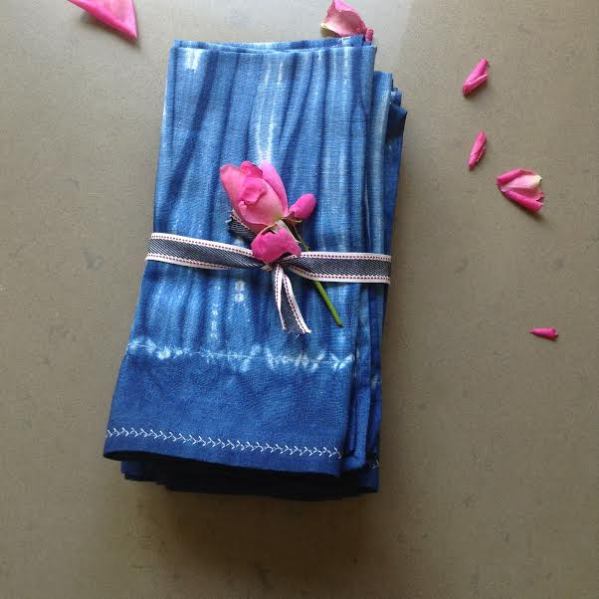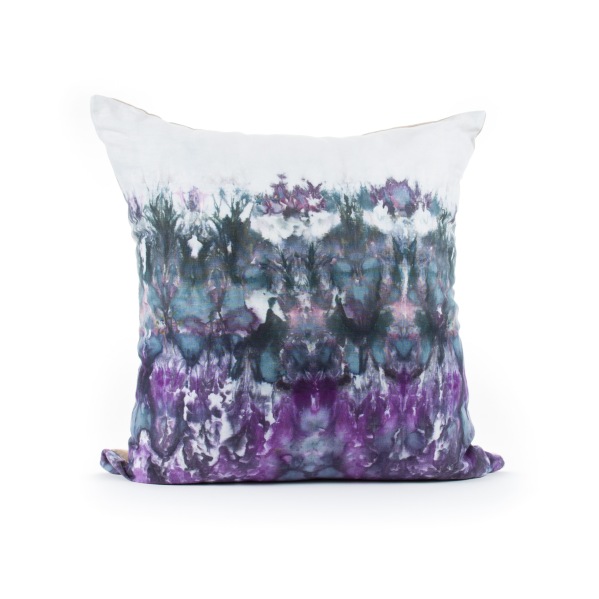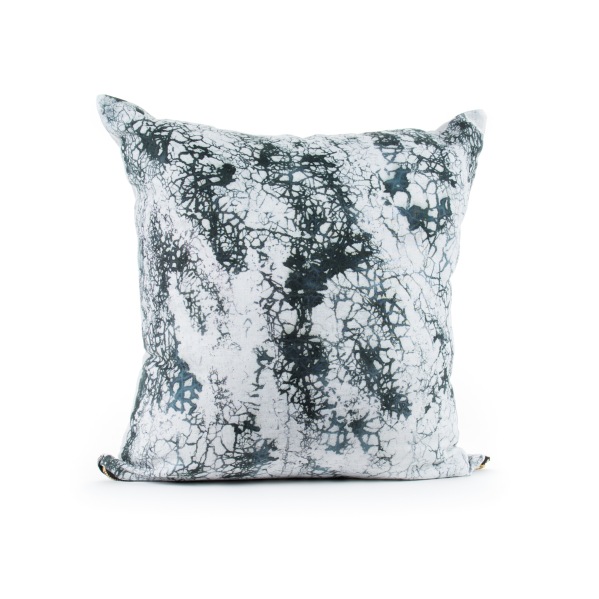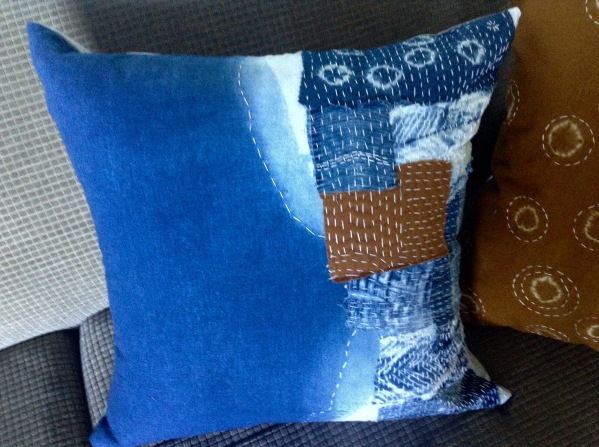The Atomic/Space age in design flourished from the late 1940’s t0 the 1960’s. It was a reflection of popular culture’s obsession with the splitting of the atom and what that meant for the future. In spite of the threat of nuclear war, there was also a sense of optimism and the belief that science was the key to prosperity. ” The splitting of the atom, simple biological forms, and even astronomical discoveries caught the imagination of artists in every field of endeavor.” (source) This was seen in all aspects of design as the preceding photos demonstrate. Some of the characteristics of the period are: free form or curved lines, such as the amoeba shaped table above, scientific and atomic motifs as in this classic bark cloth  or this wacky lamp.
or this wacky lamp.
Legs were short, tapered, often with brass tips and some were metal and hairpin-shaped as in this picture: 
New materials such as plastic, melamine, formica and laminate were employed everywhere in a colour palette that was either pastel like pink, turquoise, pale yellow or bold colours such as orange, bright yellow and red. The spare, functional design of the Scandinavian movement can also be seen in the lack of ornamentation, and lighter woods. This dresser/sideboard is the perfect example:
 It is teak and melamine, has a space age motif on the top, the colour is described as malachite ( a hot colour trend for 2013) and it has the ubiquitous stick legs, that in this case flare outward. Noguchi’s iconic glass coffee table, the Eames leather and plywood lounge chair, Sarrinen’s plastic tulip chair, Adrian Pearsall’s gondola shaped sofas, all of these put an emphasis on the organic and functional. Presently, interest in all things retro from mid-century is very high. A search on Craigslist or Kijiji will show that vintage teak furniture, especially if it is Danish made, is selling for a lot more than traditional style mahogany or walnut. The retail furniture world is also reflecting this in that the furniture being marketed for young professionals is a re-interpretation of mid-century style. What seemed dated and 60-ish a decade ago, is now hip.
It is teak and melamine, has a space age motif on the top, the colour is described as malachite ( a hot colour trend for 2013) and it has the ubiquitous stick legs, that in this case flare outward. Noguchi’s iconic glass coffee table, the Eames leather and plywood lounge chair, Sarrinen’s plastic tulip chair, Adrian Pearsall’s gondola shaped sofas, all of these put an emphasis on the organic and functional. Presently, interest in all things retro from mid-century is very high. A search on Craigslist or Kijiji will show that vintage teak furniture, especially if it is Danish made, is selling for a lot more than traditional style mahogany or walnut. The retail furniture world is also reflecting this in that the furniture being marketed for young professionals is a re-interpretation of mid-century style. What seemed dated and 60-ish a decade ago, is now hip.

From MODish.net
Having grown up in this period, I have a nostalgia for a lot of this design and admit to watching Mad Men very closely for both the furniture and the clothing. I am particularly fond of 1950’s dressers; there are quite a few of them around at garage sales or online and they can usually be bought quite cheaply if the owner is not a collector. What is great about them is that they are very well made in blond mahogany or birch, have a streamlined, slightly different shape and usually have atomic style handles. Mengel furniture had a line called “Permanized” and they weren’t kidding because most of these sets are in terrific shape 60 years later. Above is an example of one of these dressers with chevron handles that evoke images of flight. Or this one that has flying saucer knobs. 
I recently painted an end table that was all right in its original state as you can see in the picture but it did have a large nick on one side. These tables are quite common and some of them are all laminate. This is walnut, made in Montreal and is certainly Atomic in its side design with the brass bars and curved lines. I painted it in Barcelona orange; it is a departure from the original but the colour is in keeping with its era.
Thanks to Revival Vintage Studio and their excellent article on the Atomic era. http://revivalvintagestudio.blogspot.ca/2013/01/mid-century-design-in-atomic-age-beauty
Linking up with:
<a href=” ” title=”Shade of Amber”>http://
” title=”Shade of Amber”>http://
< ” title=”Three Mango Seeds”>a href=”http://www.threemangoseeds.blogspot.com/” target=”_blank”>
” title=”Three Mango Seeds”>a href=”http://www.threemangoseeds.blogspot.com/” target=”_blank”>

















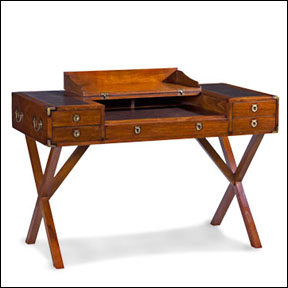

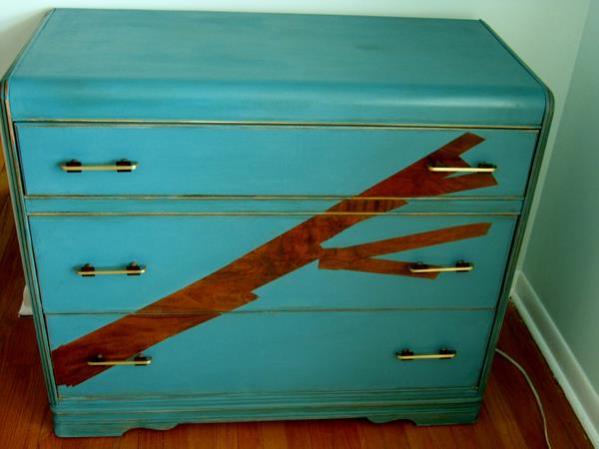
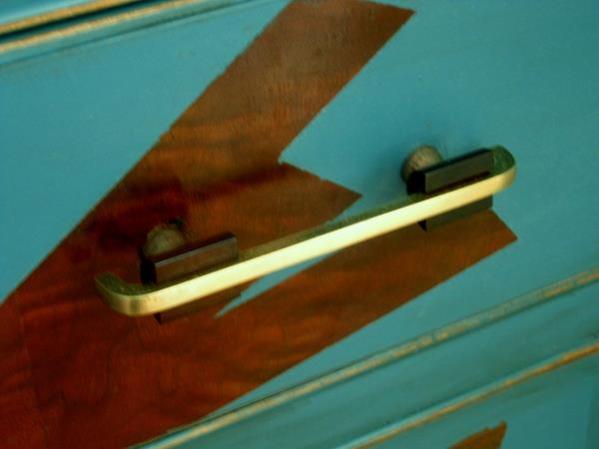
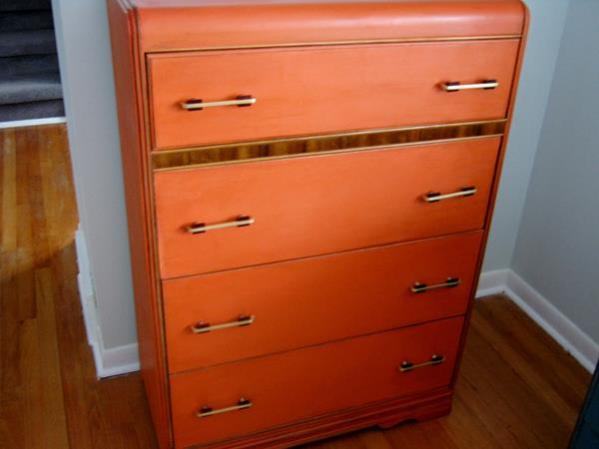

![CIMG3084[1]](https://upwithfurniture.wordpress.com/wp-content/uploads/2013/03/cimg30841.jpg?w=232&h=300)




